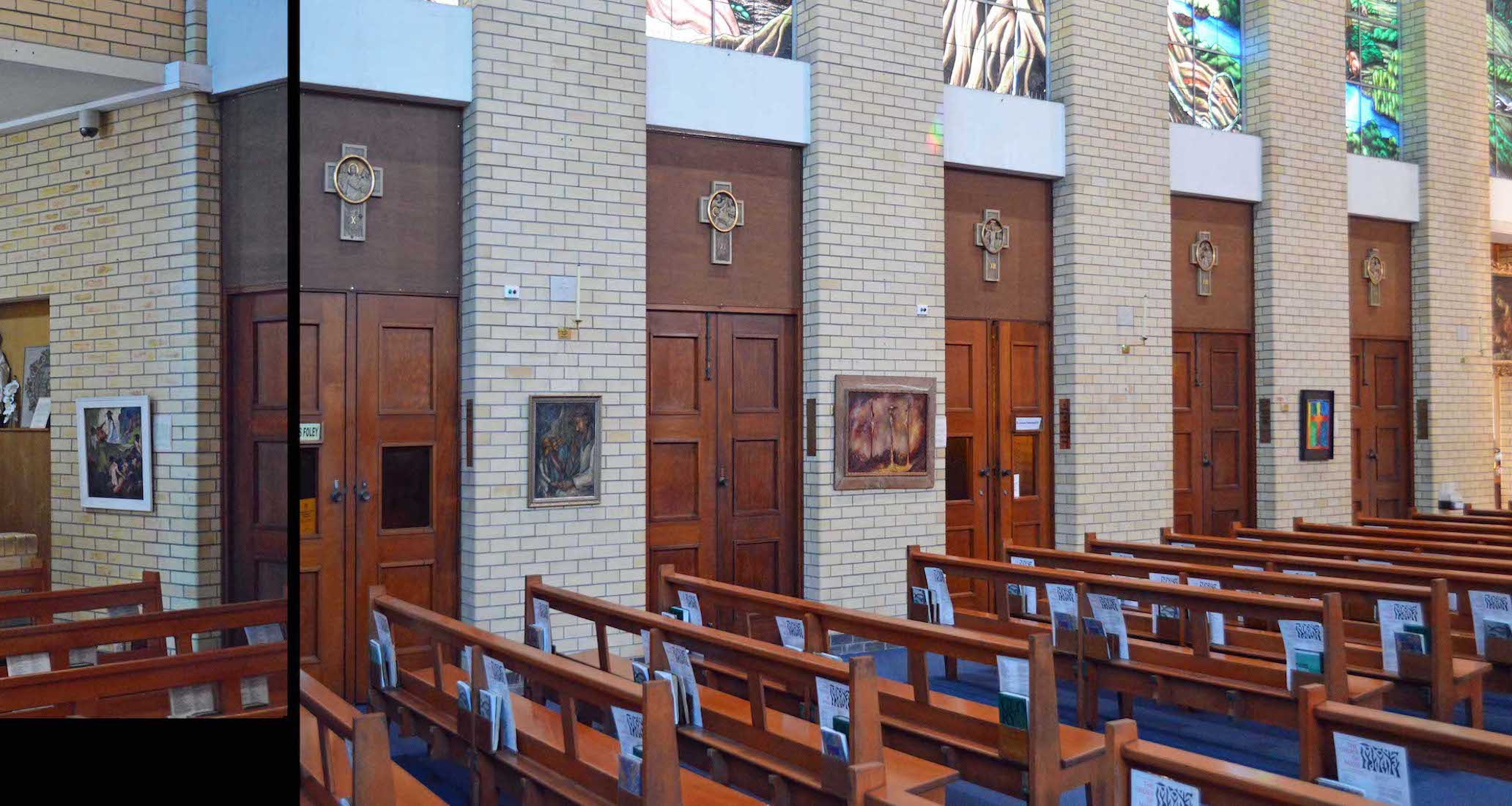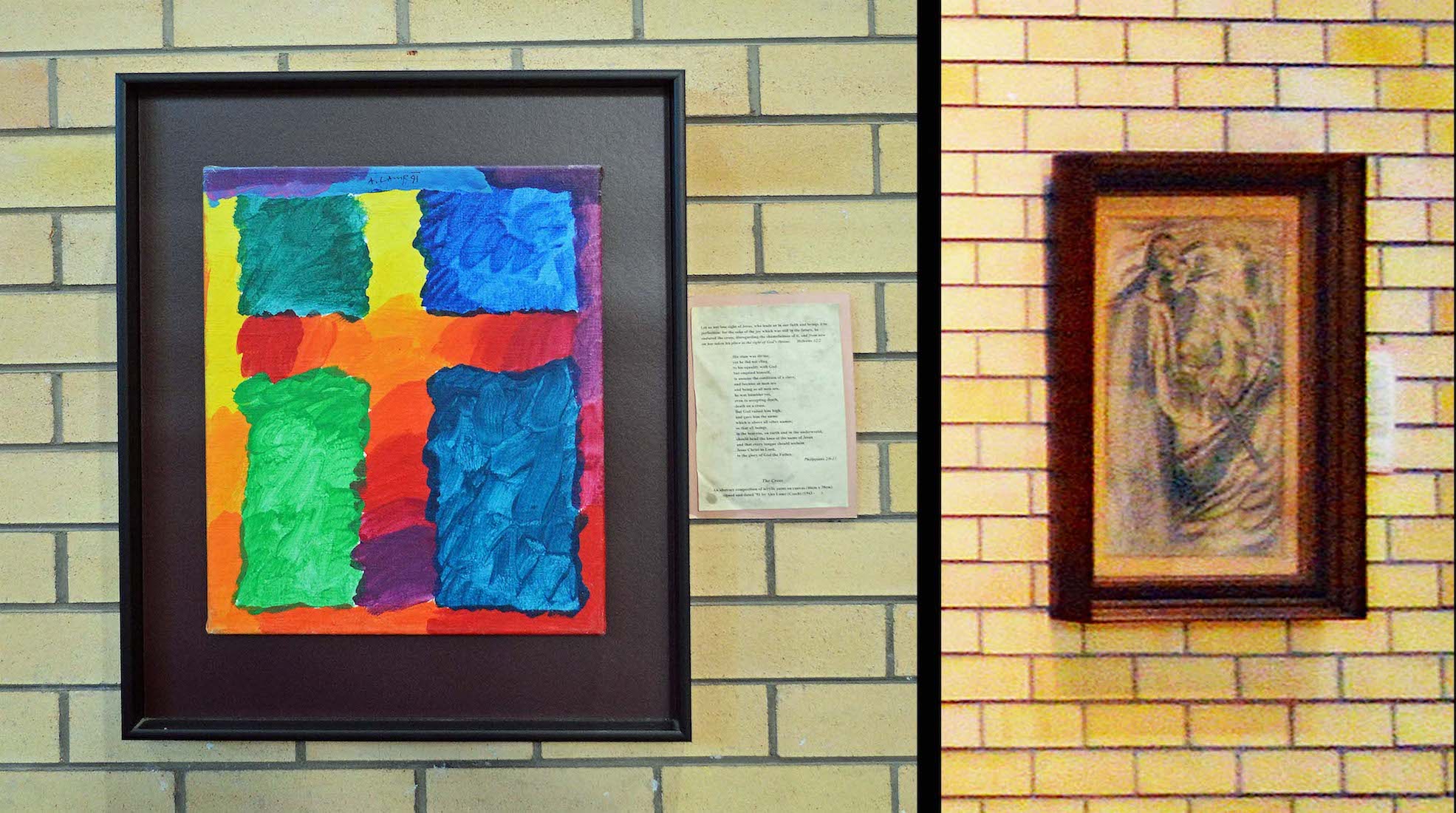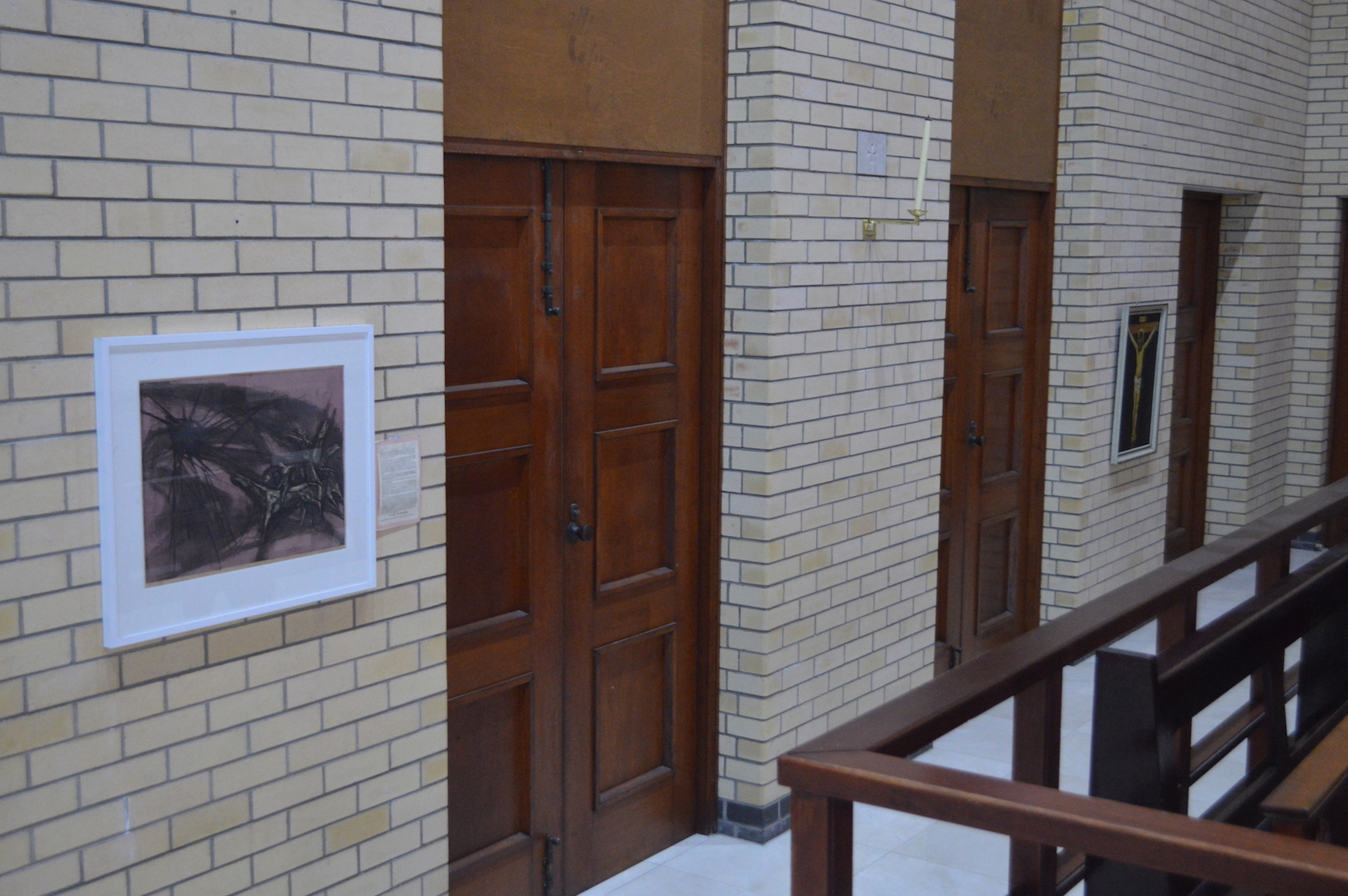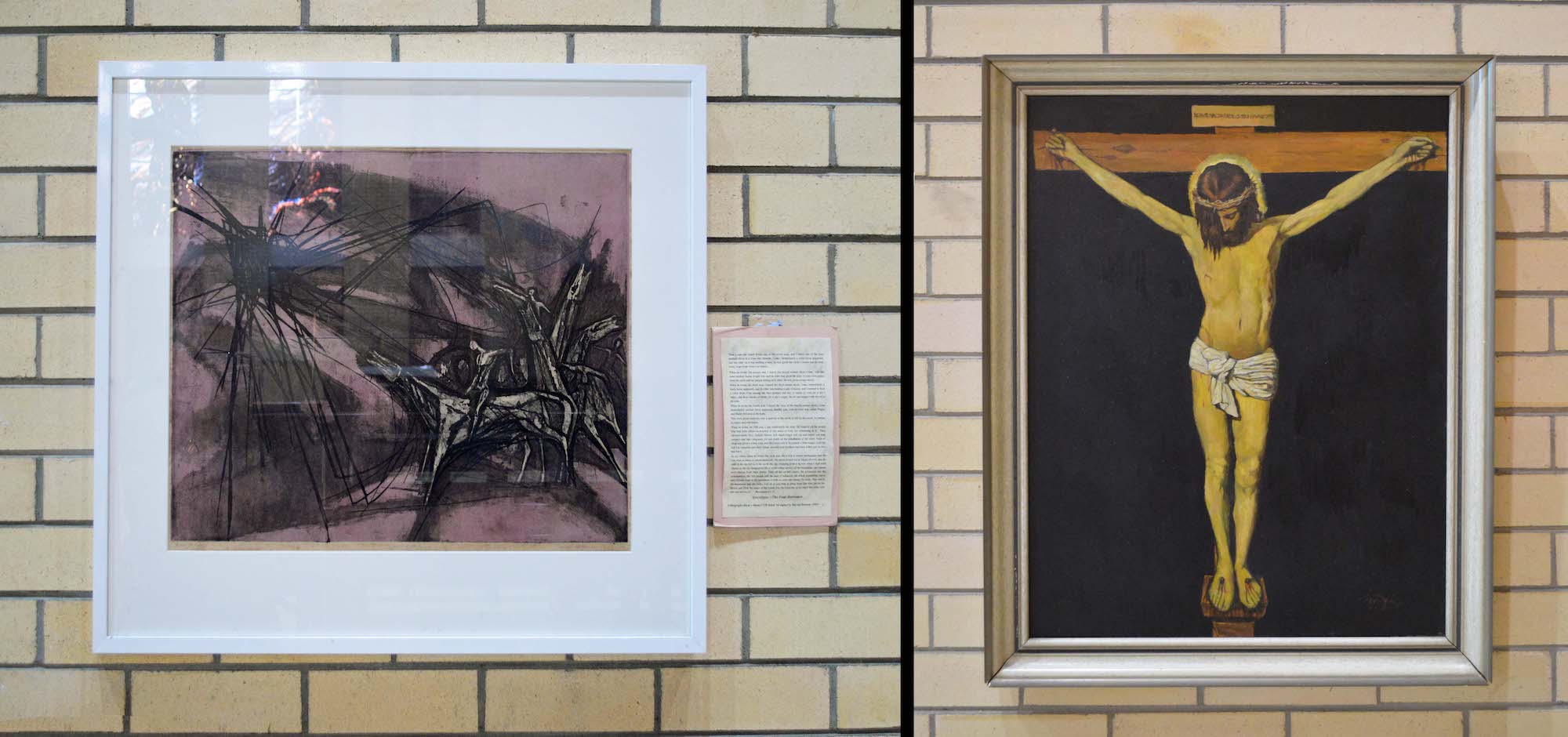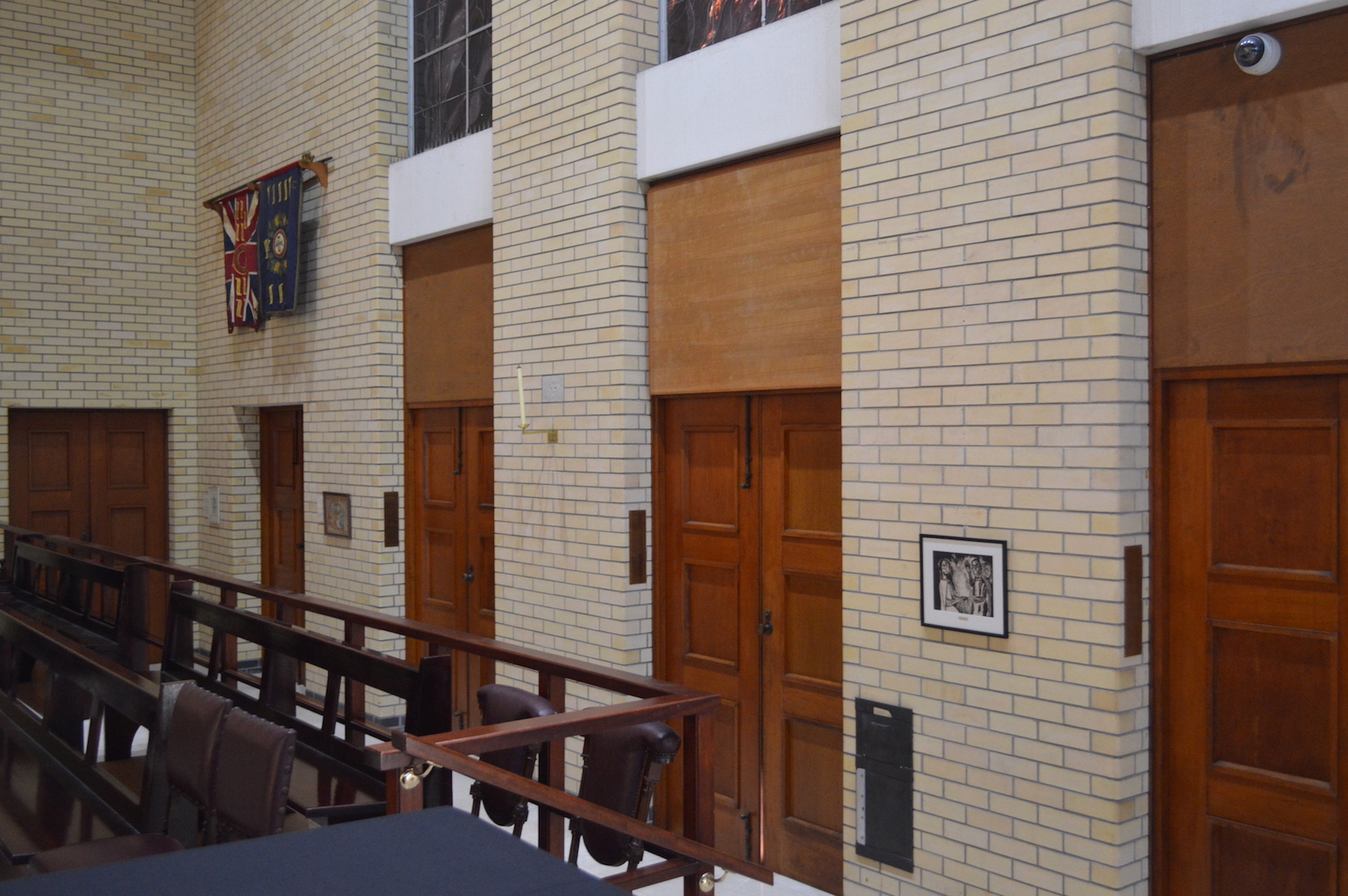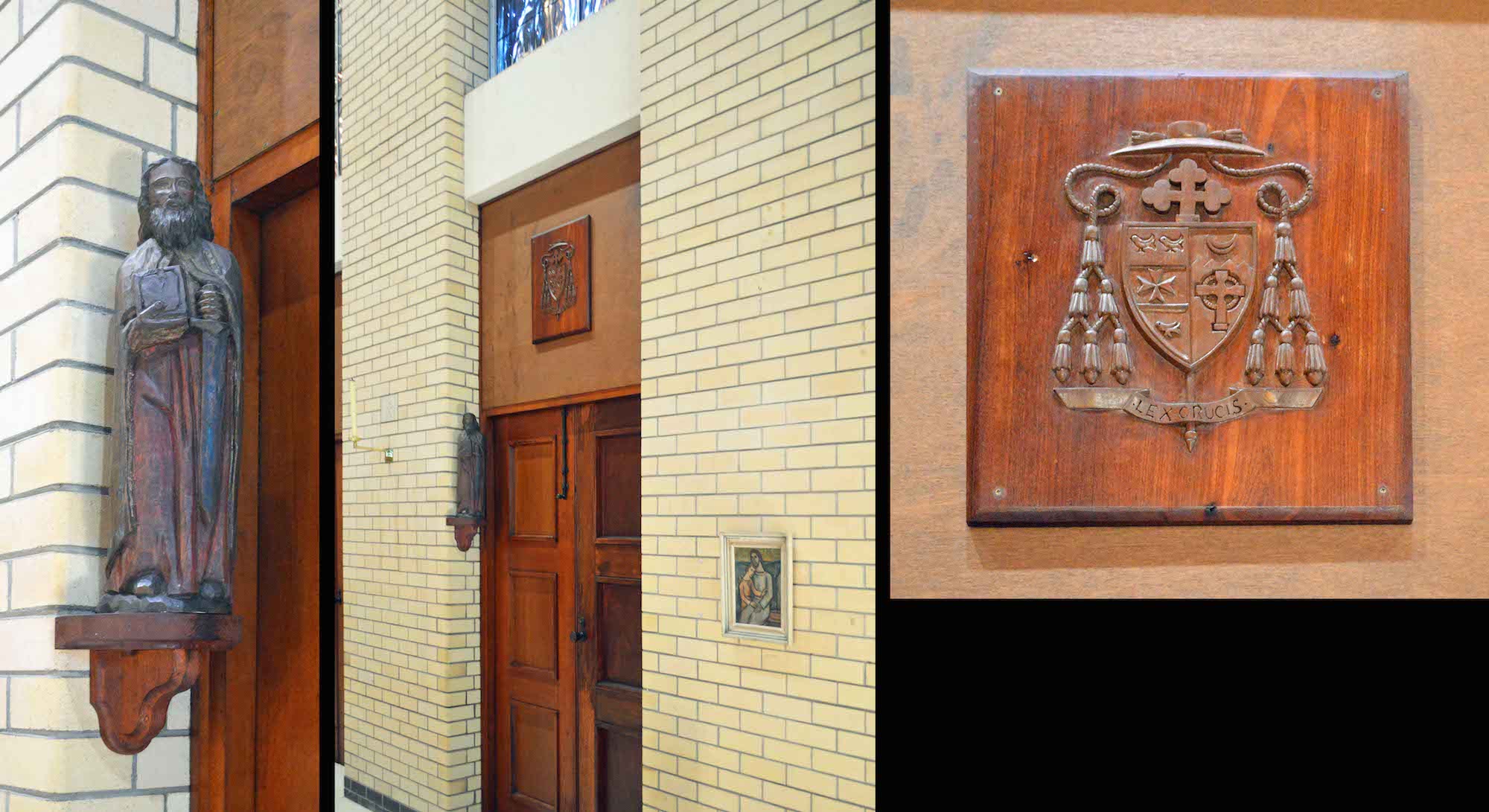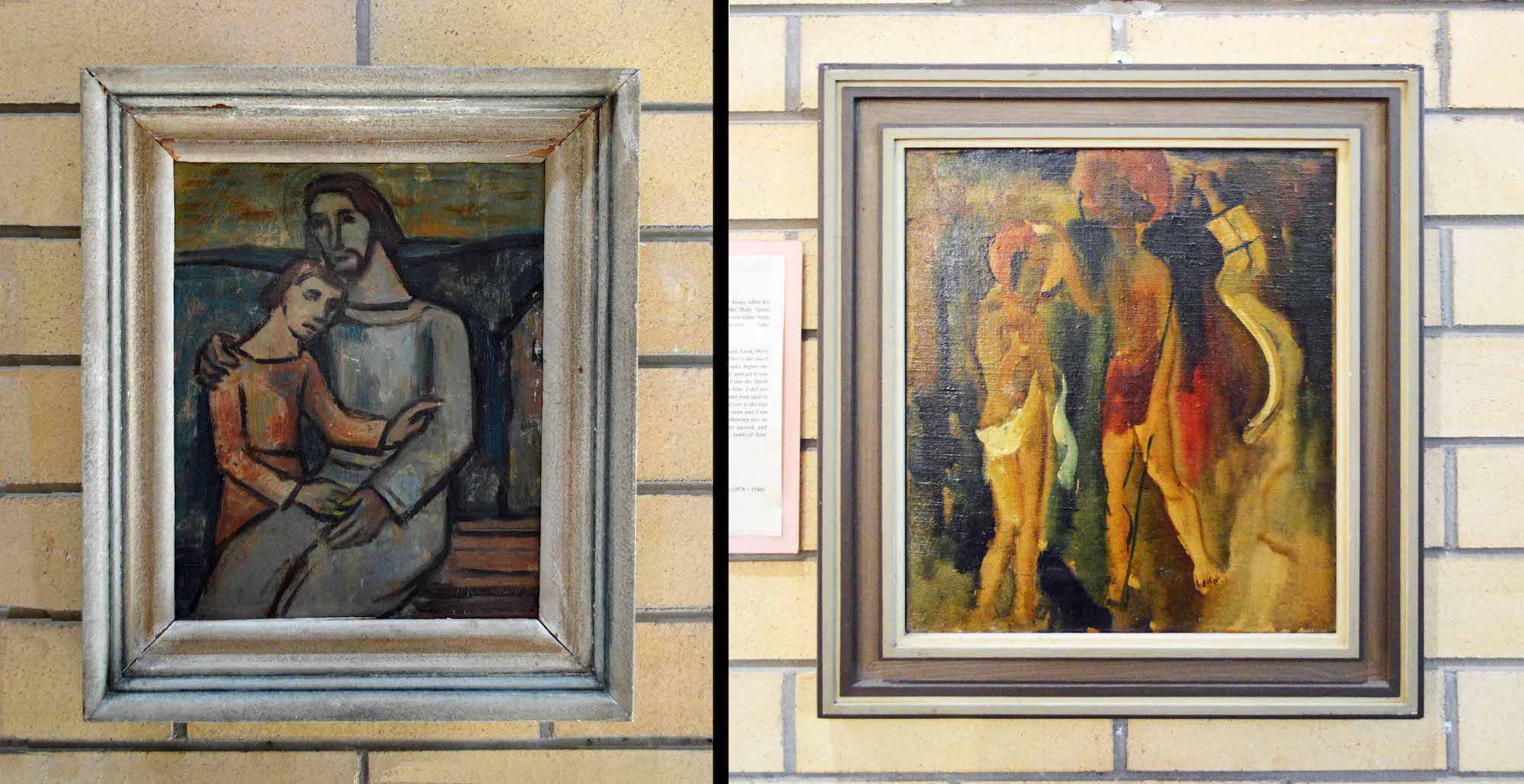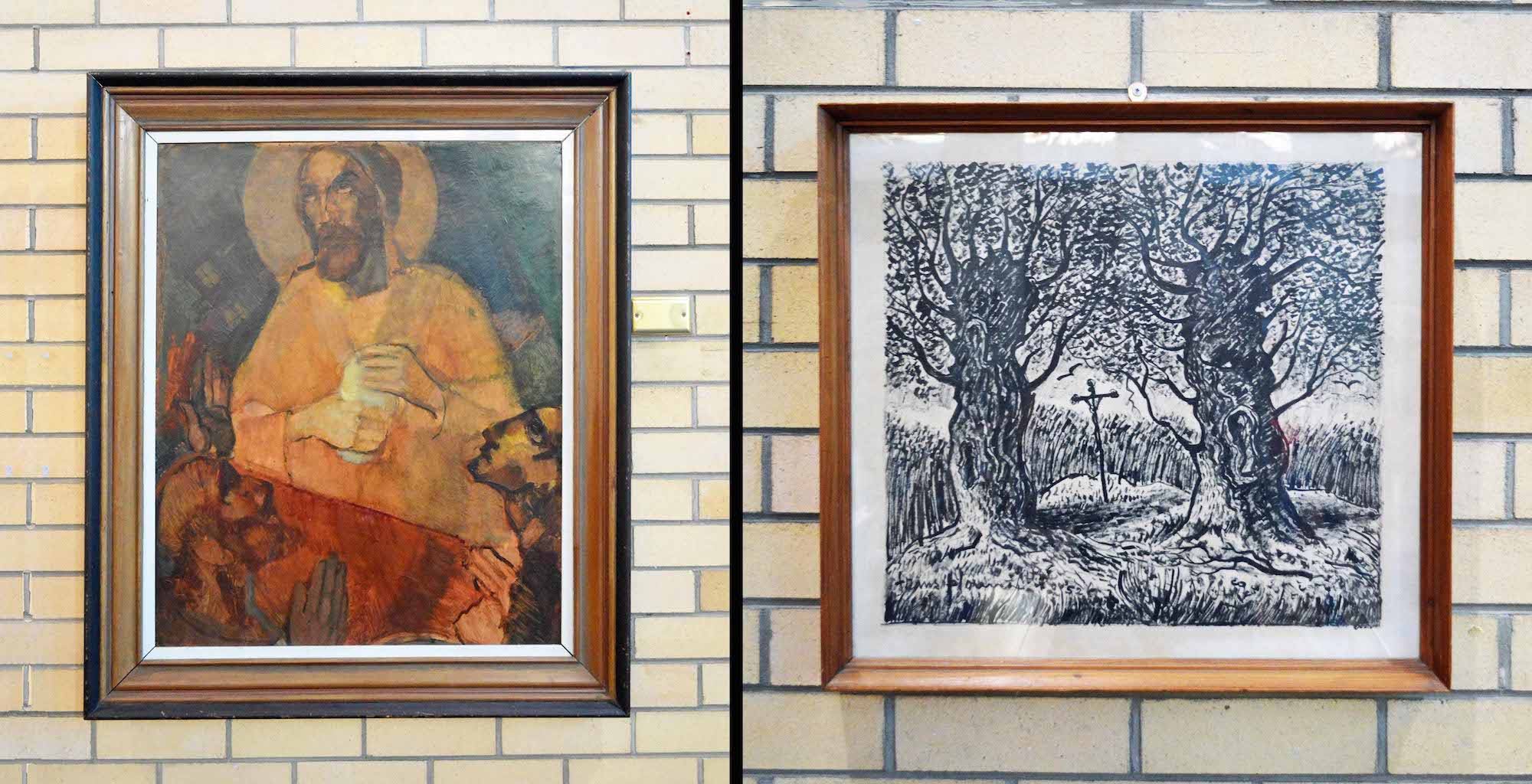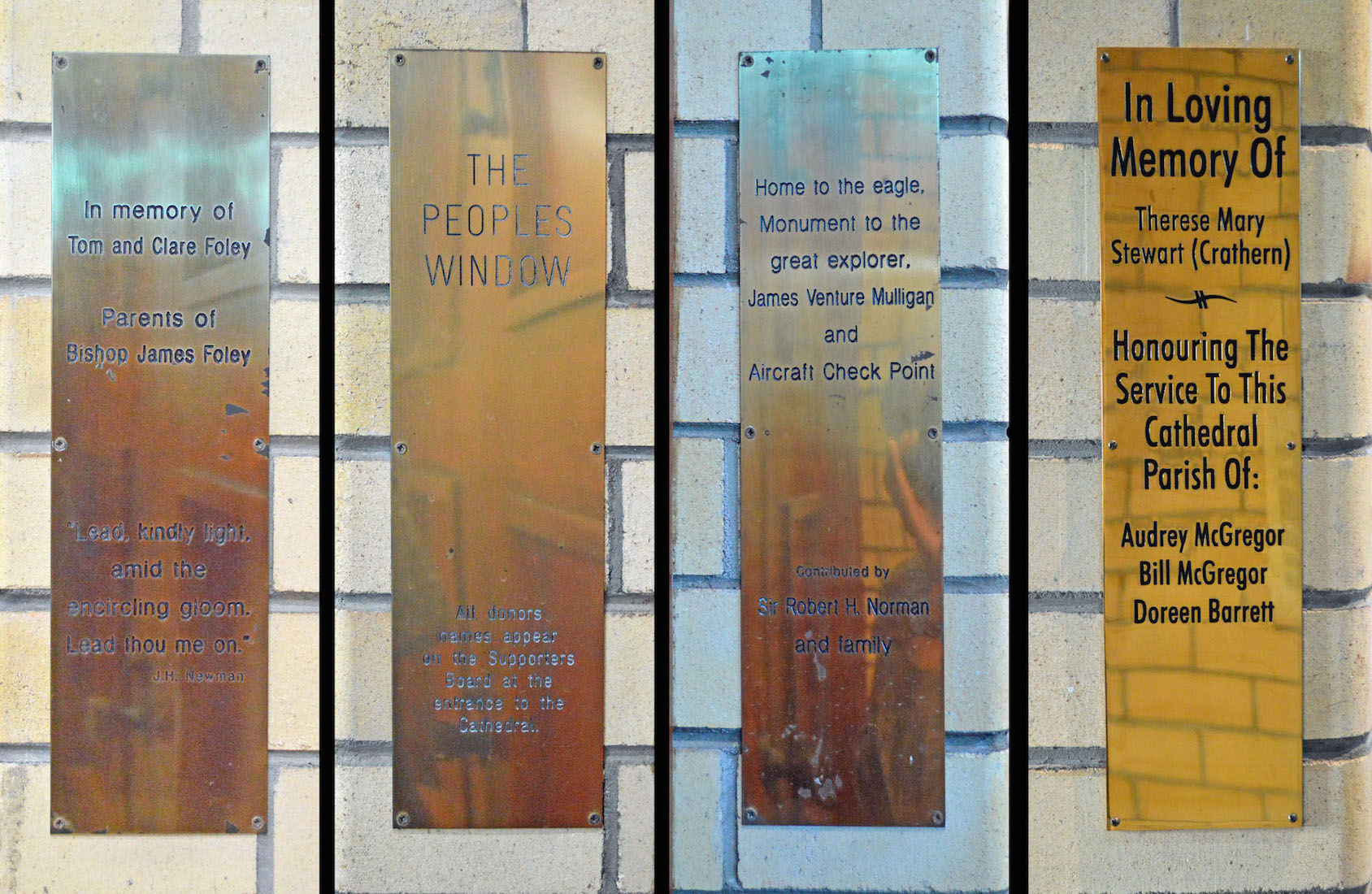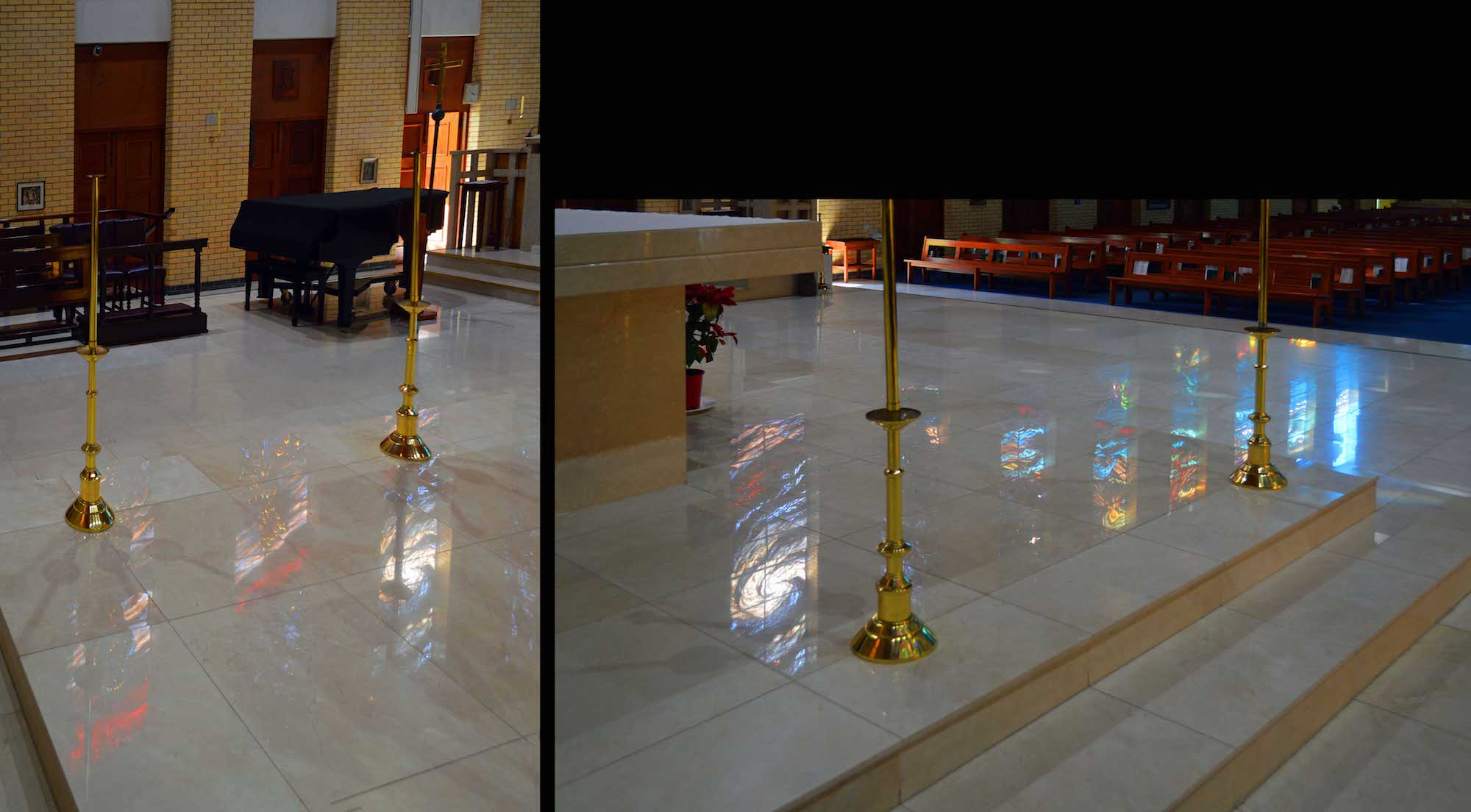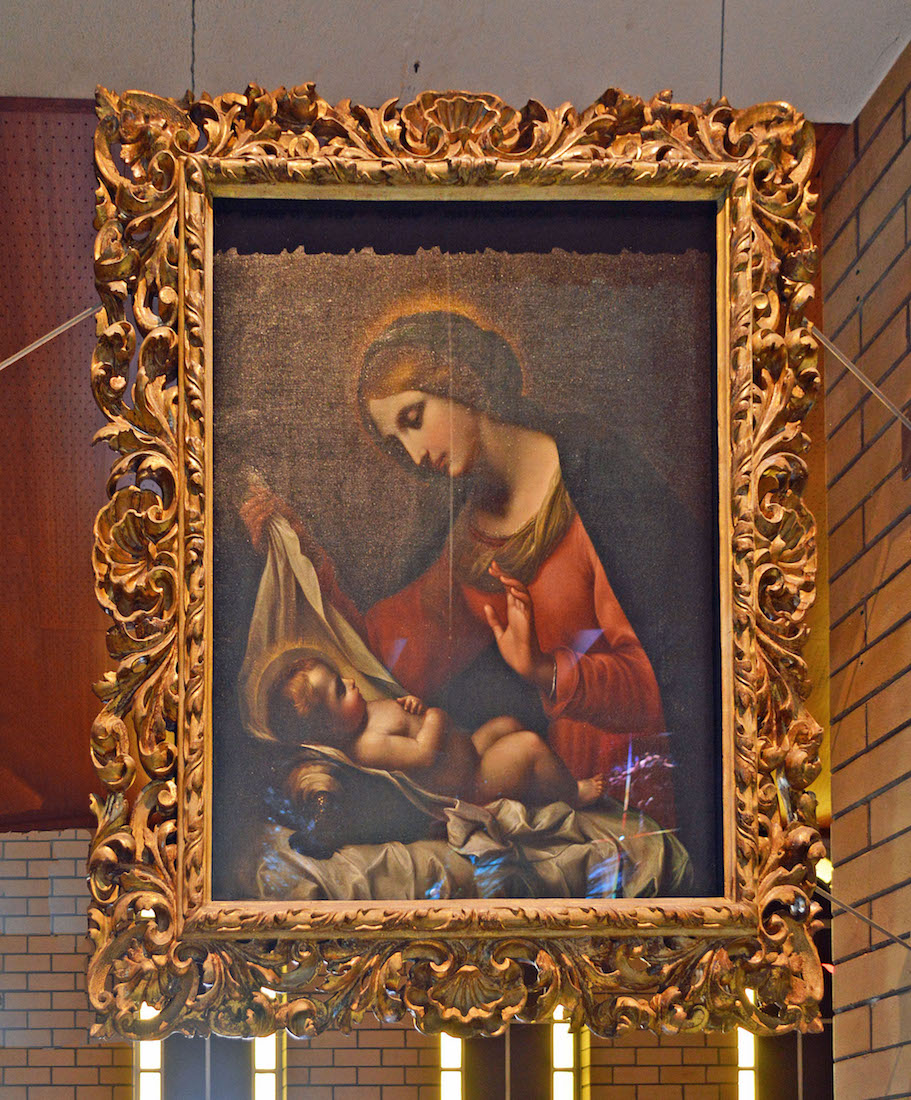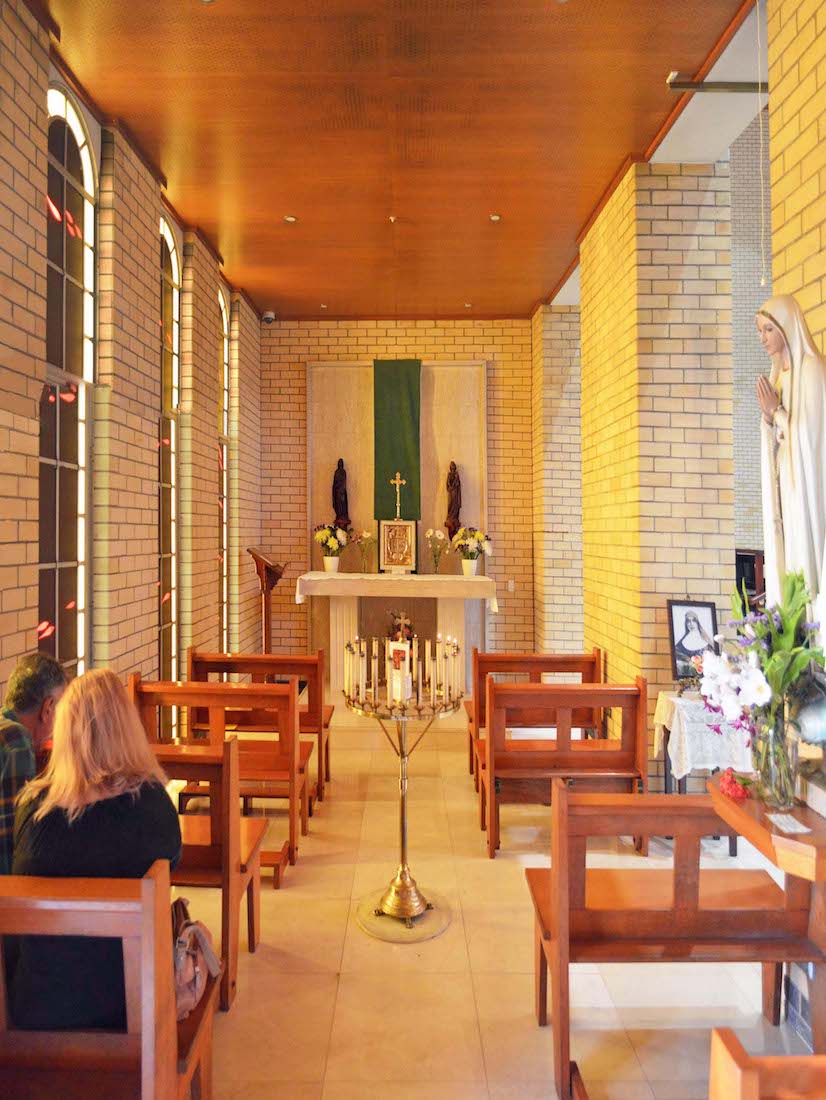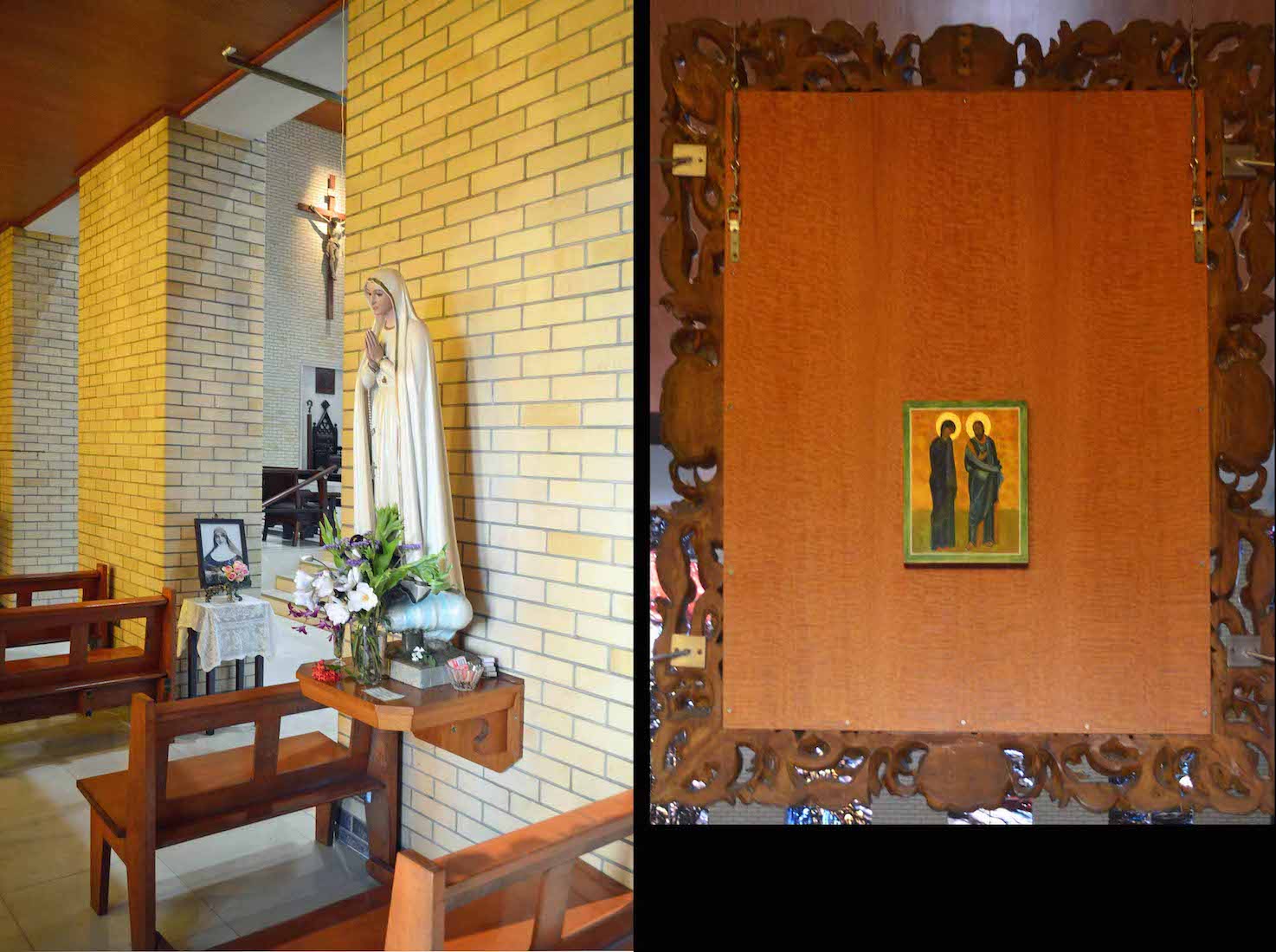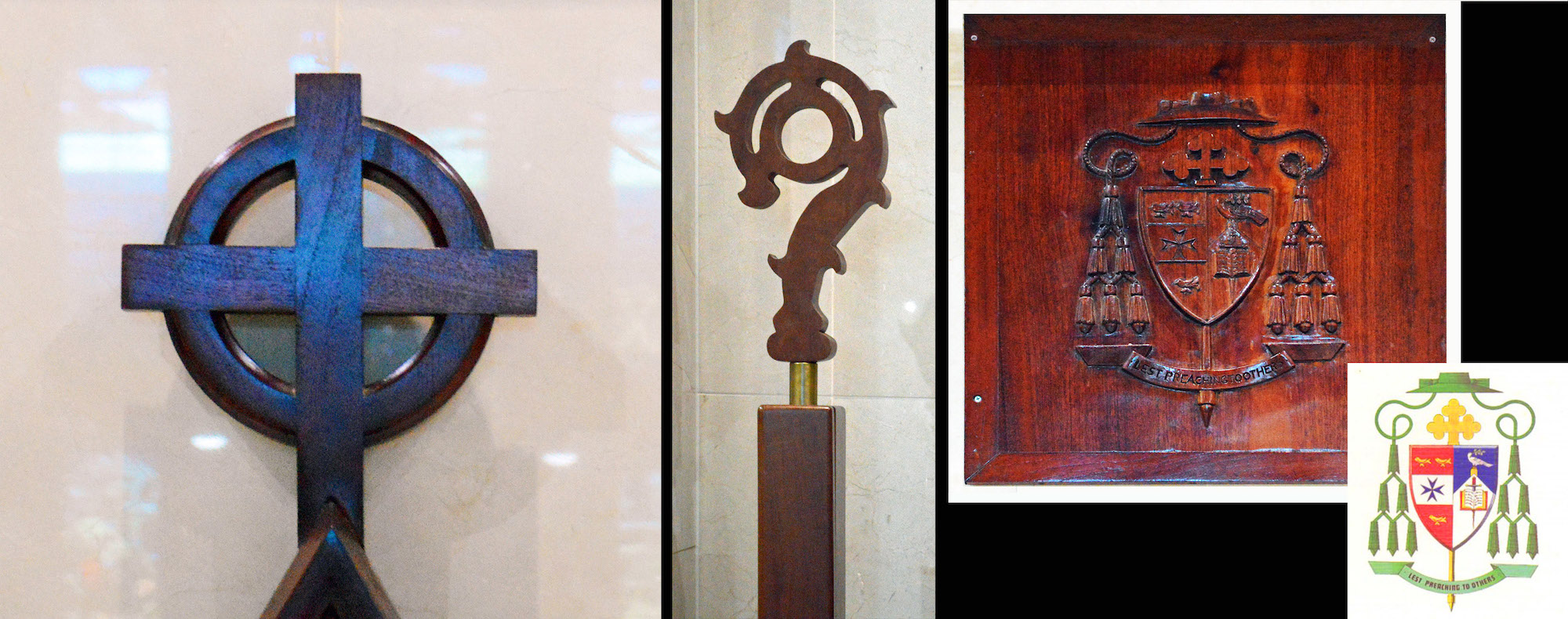
The cathedra has a form of Celtic cross in its back – a cross surrounded by a circle. The circle is thought to have represented the sun. Beside the cathedra is the bishop’s crook or staff – a reminder that the bishop is the shepherd of his flock. Above the cathedra is the crest of the present bishop. INDEX
42. CRUCIFIX FOCUS
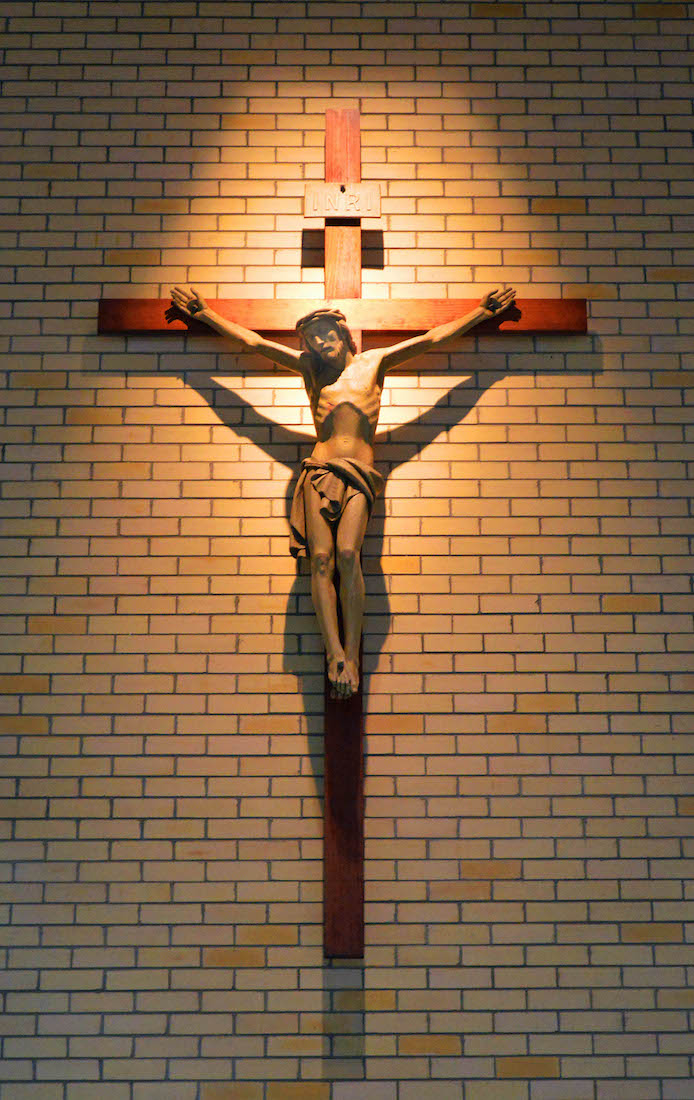
The central focus of worship is the sanctuary crucifix which hangs above the altar. Protestants will argue that it is the Risen Christ who should be the object of our focus, yet the crucifixion is central to the Christian faith.
43. STATIONS OF THE CROSS
There are some other less striking features in the nave of this Cathedral! On the supporting pillars we find the 14 Stations of the Cross. These are helpful in leading the Easter pilgrim through the stages of Christ’s final journey to the cross.
44. NORTH WALL ART
Also around the walls of the Cathedral are a number of works of art with a Christian theme. I suspect these may vary from time to time. Many of the pictures have printed descriptions alongside.
45. NORTH WALL ART DETAIL
From left ... . • ‘Ecco Homo, Behold the Man’ by Vincken, taken from John 19:1–11. Vincken was a Limburg painter, born in 1914. • Jesus with the Children. • Crucifixion Scene
46. TOWARDS THE CHAPEL
As we contiue along this wall towards the chapel, there are more paintings to be seen.
47. PAINTINGS DETAIL
The painting at left is entitled ‘The Cross’. It is an abstract composition of acrylic on canvas, signed and dated ‘91 by Czech artist Ales Lamar (1943 – ). The painting at right appears to show Jesus interacting with two of the disciples in their fishing boat.
48. NORTH WALL BEYOND THE CHAPEL
Following the North aisle up beyond the chapel we find two more paintings.
49. PAINTINGS DETAIL
The painting at left depicts ‘The Four Horsemen of the Apocolypse’. It is a lithograph dated ’63 and signed by Ru van Rossem (1924 – ). The painting at right is a representation of Christ on the cross.
50. SOUTH SANCTUARY PAINTINGS
There are also various works of art on the South w all, beginning right up near the Regimental Colours.
51. PAINTINGS DETAIL
From left ... . • This painting is by Gene Eggen. I suspect it shows Judas Iscariot being handed the 30 pieces of silver for betraying Jesus to the Pharisees. • The second painting shows Jesus working in the carpentry workshop with his parents. It is a mixed media design for a stained glass window by Dutch artist Henri C. Jonas (1878 – 1944). • The third picture is a pencil drawing entitled ‘Three Shepherds’ by Jos Viegers.
52. STATUE AND CREST
Moving along the South wall we come to a door to a private room (confessional?) with a statue alongside and a crest above. The statue figure carries a book and a sword, so probably represents St Paul. A bishop’s coat of arms is fixed above the door – the left half coinciding with the crest for the Cairns Diocese.
53. SOUTH NAVE ART
We continue looking at the artwork fixed to this South wall.
54. SOUTH WALL PAINTINGS
The painting at left portrays a man and a child. The slight halo about the man’s head may indicate that this is Jesus. The painting at right shows John the Baptist at the Baptism of Jesus. It is an oil on canvas by Dutch painter Henri C. Jonas (1878 –1944), but is unsigned.
55. MORE PAINTINGS
The painting at left here is hard to interpret. The central figure (Jesus? an apostle?) appears to be feeding bread to a crowd. The painting at right shows a primitive crucifix planted between two trees in a wilderness area. The remaining painting on this wall is by the entry to the baptistry, and we have already seen this.
56. BRASS WINDOW PLATES
Beneath each window, on the side of a supporting column, is a brass plate in memory of the donor of the window, and often with some more general encouraging affirmation.
57. FRONT PLATFORM REFLECTIONS
We have already noted in some detail the furnishings of the sanctuary. The supporting platform is of reflective white marble which picks up the light and colour of the creation windows.
59. BLESSED SACRAMENT CHAPEL
And so to the Blessed Sacrament Chapel – the only chapel in this Cathedral. We observe the candle stand in the aisle with the altar and tabernacle beyond, and the photograph and statue to the right.
60. CHAPEL SOUTH WALL
This view brings the side of the chapel into focus, along with an icon on the back of the painting at the entry. The icon shows a man and a woman, but unfortunately we cannot read the identifying text!



